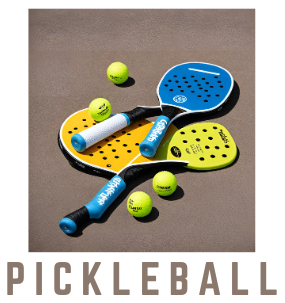So you’ve started playing pickleball and you’re having a great time, but you’ve noticed that sometimes a fault is called during the game and you’re not quite sure what that means. Well, fear not! In this article, we will explore the different types of pickleball faults, from foot faults to paddle faults. By the end, you’ll have a clear understanding of what constitutes a fault and how to avoid them, ensuring a smooth and enjoyable game for all. So let’s jump right in and learn about the world of pickleball faults! Pickleball, a popular paddle sport that combines elements of tennis, badminton, and table tennis, is known for its fast-paced and engaging gameplay. Like any sport, pickleball has rules and regulations that players must adhere to in order to maintain fairness and sportsmanship. One aspect of the game that players should be familiar with are the different types of faults that can occur during play. Understanding these faults can help players improve their skills and avoid making costly mistakes on the court. Let’s take a closer look at the various types of pickleball faults.
Service Faults
Service faults occur during the initial serve of a rally. In pickleball, the serve must be hit underhand and contact the ball below waist level. If the serve fails to meet these requirements, it is considered a service fault. Additionally, the server must stand behind the baseline and diagonally across from the opponent. Stepping on or crossing the baseline before making contact with the ball also results in a service fault.
Foot Faults
Foot faults are a common type of pickleball fault that occurs during the serve. A foot fault happens when the server steps on or over the baseline or into the non-volley zone before the ball is hit. To avoid foot faults, it is important for players to maintain proper positioning and footwork when serving.
Side Out Faults
Side out faults occur when a player fails to execute a legal serve. This can include hitting the ball into the net, hitting the ball out of bounds, or failing to get the ball over the net. These faults result in a side out, meaning the opposing team gains the serve.
Kitchen Violation Faults
The kitchen, also known as the non-volley zone, is an area on the pickleball court where players are not allowed to hit the ball in the air without letting it bounce first. Kitchen violation faults occur when a player hits the ball while inside the non-volley zone, landing the ball directly in the opponent’s court. To avoid kitchen violation faults, players must be mindful of their positioning and stay outside the non-volley zone when hitting the ball.
Double Bounce Faults
Double bounce faults occur when a player fails to allow the ball to bounce once on their own side of the net before hitting it. In pickleball, the ball must bounce twice, once on each side, before players can hit it out of the air. Failing to follow this rule results in a double bounce fault.
Non-Volley Zone Foot Faults
Like foot faults during the serve, foot faults can also occur when players step into the non-volley zone while hitting the ball. Non-volley zone foot faults can happen during any volley, not just the serve. It is important for players to be aware of their positioning and avoid stepping into the non-volley zone while hitting the ball.
Out-of-Bounds Faults
Out-of-bounds faults occur when a player hits the ball beyond the boundaries of the court. In pickleball, the ball must land within the boundaries of the court to remain in play. Hitting the ball out-of-bounds results in a fault.
Faults during a Rally
During a rally, faults can occur when players fail to adhere to the rules and regulations of the game. This can include hitting the ball unlawfully, such as hitting it out-of-bounds, into the net, or failing to let it bounce twice. It can also include foot faults, kitchen violation faults, and double bounce faults. Players should be mindful of these faults and strive to maintain proper technique and positioning during the course of a rally.
Equipment Faults
Equipment faults occur when players use illegal or unapproved equipment during play. This can include using a paddle that does not meet the specifications set by the governing bodies of pickleball, or using a ball that is not regulation size or weight.
Unforced Errors
Unforced errors are faults that occur as a result of a player’s own mistakes, rather than the opponent’s skill or strategy. This can include hitting the ball into the net, hitting it out-of-bounds, or failing to execute a proper shot. Minimizing unforced errors is important for maintaining consistency and improving performance on the pickleball court.
Understanding the various types of pickleball faults is essential for both beginners and experienced players alike. By familiarizing yourself with these faults, you can avoid making costly mistakes, maintain a fair and enjoyable game, and ultimately improve your pickleball skills. So, next time you step onto the pickleball court, keep these faults in mind and strive to play a clean and fault-free game. Good luck and have fun!

